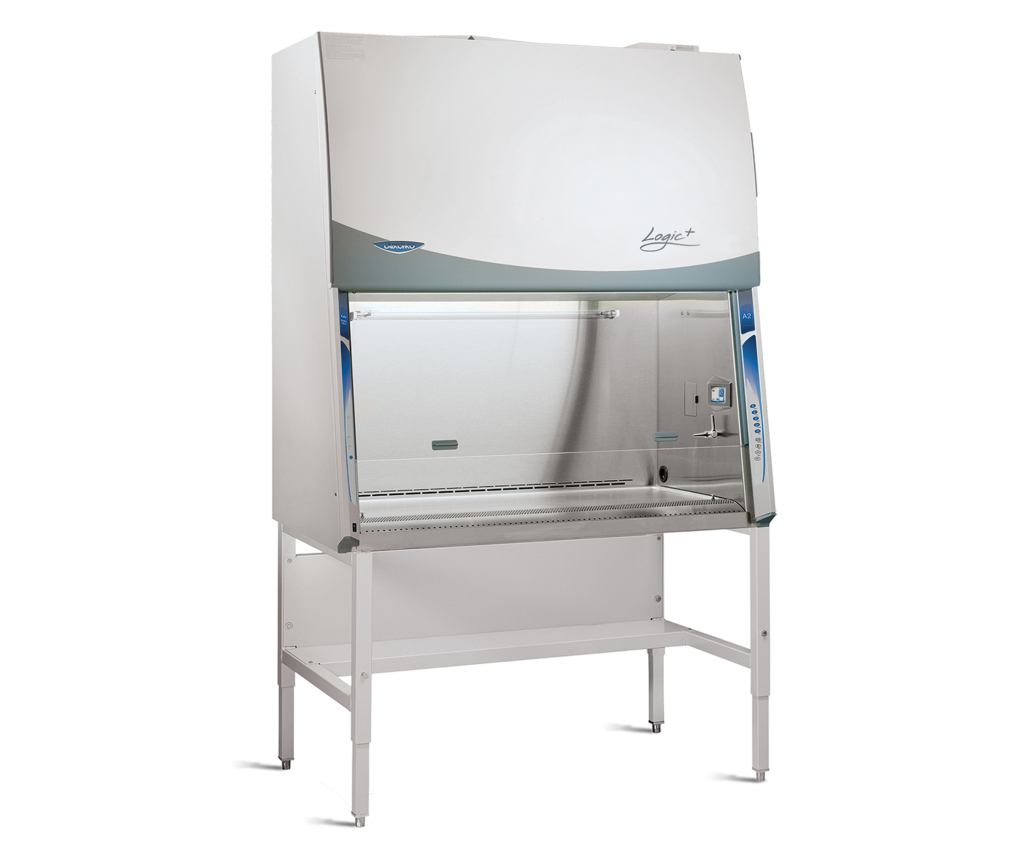Monitoring BSC Performance: Electronics vs. Traditional Pressure Gauge

Biosafety cabinet performance, specifically the current state of the cabinet and its filters, was traditionally monitored using a differential pressure gauge. The most common type is a Magnehelic¹ or “mag+” gauge. The gauge displays the differential between low and high pressure connections. Typical protocol requires reading and recording the gauge values periodically. A significant pressure drop is indicative of filter leakage or other problems with the blower/motor, while significant increases indicate filter loading or blockage of the grilles.
One of the most common gauge installations connects the high pressure port to the plenum connecting the blower to the supply and exhaust HEPA filters and leaves the low pressure port open to atmosphere. This configuration indicates the positive pressure on the HEPA filters, so as the filters load with airborne contaminants, the pressure (and the gauge reading) will increase. While this configuration will give a “direct” reading of the load on the filters, it has the disadvantage that positive pressure, which is contaminated air, is being directed to the gauge. If a leak occurs in the tubing or gauge, contaminated air will leak into the laboratory.
Another configuration connects the low pressure port to the rear duct of the cabinet (under negative pressure) and leaves the high pressure connection open to atmosphere. This system “fails to safe” - if a leak occurs, room air is drawn into the cabinet instead of blowing out; however, monitoring negative pressure is far less accurate and usually requires large changes in filter pressure to record a significant change in the gauge reading.
In either configuration, the gauge always left operators with two important questions unanswered:
1. How long will the filters last?
2. Is the unit running OK?
Labconco’s use of ECM (Electronically Commutated Motor) technology in their Purifier® Logic® Biosafety Cabinets has allowed these questions to be answered accurately. The ECM constantly sends a signal to the Logic LCD information center, displaying the amount of filter life that is remaining and alerting the user to any airflow alert conditions. The ECM performs these actions by continuously monitoring its speed and torque.
Regarding filter life monitoring
The initial motor speed is recorded into the memory of the Logic during final assembly and testing. The maximum speed of the motor is known from previous validation testing. Knowing the initial, current, and maximum motor speed, the controller continuously performs a mathematical calculation using these parameters to determine the percentage of filter life that is remaining before the motor will reach its maximum speed.
Regarding consistent performance
If a sudden, dramatic pressure increase or decrease occurs in the cabinet (from a blocked grille, for example), the ECM recognizes the change in its load, and reacts by sending an airflow alert to the display on the Logic, and sounding an audible alarm. This immediate feedback notifies the user that they have done something to the cabinet that could affect its performance, and they need to correct this condition. Each size Logic cabinet is also programmed with a specific motor-blower performance curve. In essence, the ECM has a “memory” of the precise speed and torque values required to maintain constant airflow profile (CAP) as the filters load. During operation, the ECM constantly monitors and adjusts its speed and torque to keep the Logic operating at the appropriate airflow volumes. Utilizing the ECM capabilities, the Logic provides quantitative information on the remaining filter life and on the consistent performance of the Biosafety Cabinet. The information is provided in real time and in a user-friendly format, as opposed to the mag-gauge that requires constant monitoring and interpretation by the user.
----------------------------------
¹ Magnehelic is a trademark of Dwyer Instruments, Michigan City, Indiana
| chevron_left | What is the best way to concentrate? | Articles | 2012 - Will it be the end of our world? | chevron_right |






